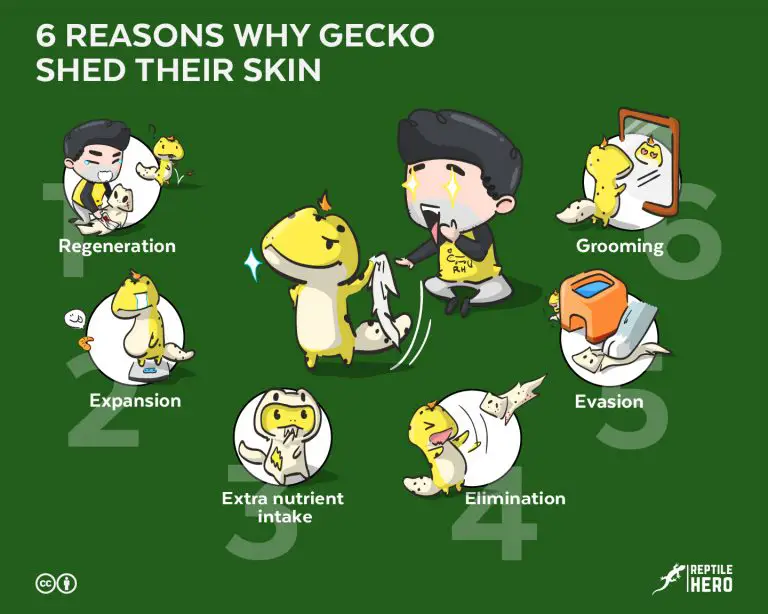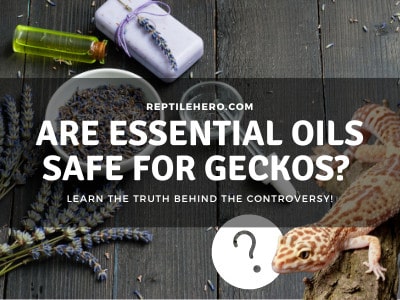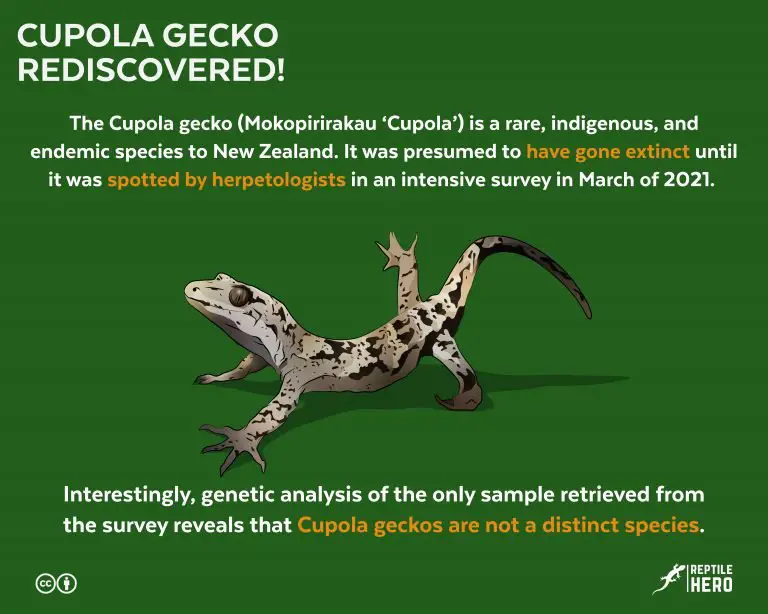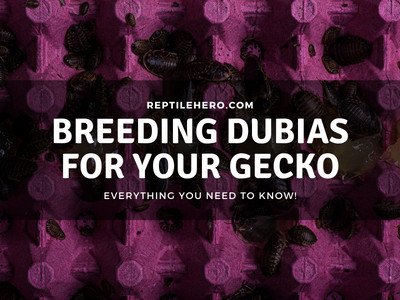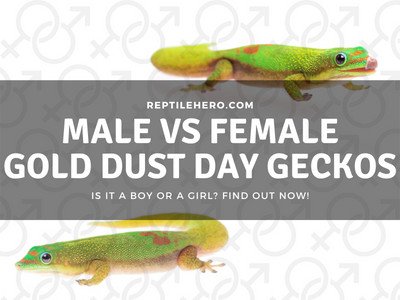Did Your Leopard Gecko Eat Hair? (What Should You Do?)
It’s not uncommon to have leopard geckos hanging out by our necks, heads, and even under our hair during quality time. But what should you do if they start trying to take a bite of your hair? Can it hurt them? How do you prevent them from eating hair?
Some owners have seen leopard geckos eat hair while exploring outside tanks. Most times, ingested hair is safely passed along with their droppings. However, longer hair takes more time to fully exit the body. Long hair may cause irritation, impaction, and amputation. In such cases, exotic veterinary care is necessary for treatment.
The shed of geckos and hair are made of the same component, so many think that accidentally eating hair is completely harmless for leopard geckos. However, this isn’t 100% true. Find out what dangers to expect if your gecko has chomped on your hair!
Is It Normal for Leopard Geckos to Eat Hair?
Normally, leopard geckos don’t deliberately eat hair. They have, however, been seen to seemingly attack and accidentally ingest human and animal hair when allowed to roam on their owner’s body or an area that hasn’t been cleaned beforehand.
Although quite rare, I have heard of a couple of interesting stories revolving around geckos and hair—both human and animal. Sometimes, they end up eating it completely. Other times, they just spit it right back out upon realizing it isn’t food.
Most of the time, leopard geckos end up getting a mouthful of hair after they climb their owner’s shoulders for out-of-the-enclosure bonding time. Some seem to like the darkness and security within their keeper’s hair. This could explain why they hide underneath.
In contrast, other geckos seem to detest their owner’s hair with a fiery passion, I have seen some repeatedly trying to bite at and attack hair—especially when it moves about.
Several owners who have seen geckos eat hair and fur, whether accidentally or deliberately, believe that moving hair and fur may simply get mistaken for a thin worm or weird insect.
They may also act in a similar way upon coming across the fur of our other furry friends—cats, dogs, and hamsters, among others. But in such scenarios, I think they’re likely reacting negatively since they can get a whiff of their potential enemies from their shed fur.

However, I think that it’s more common for geckos to inadvertently eat strands of hair and fur while simply roaming around and investigating their surroundings. Remember, they flick their tongues and lick a lot to make sense of their environment.
Learn the difference between the two in our article on lip-licking in geckos.
Besides these, I have also heard of geckos accidentally eating hair and fur when strands get mixed up in their food bowls. It also isn’t all that impossible for hair, especially long strands, to wrap around live feeders offered during mealtime.
Can a Leopard Gecko Get Hurt From Eating Hair? (3 Ways!)
Longer hair can be more harmful to leopard geckos when eaten because it takes more time to exit the body, which can be irritating. Long indigestible strands can form clumps and lead to impaction. They can also coil around limbs, toes, and tails, causing tissue death and amputation.
Both human hair and animal fur are mostly made of keratin, the very same component which makes up our lovely leopard geckos’ shed. Keratin is a protein that is indigestible, similar to chitin which is found in insects such as mealworms and dubia roaches.
So I would like to emphasize the fact that geckos can’t digest hair regardless of length. However, this doesn’t mean that eating short hair strands has the same risks as eating long ones. Continue reading on to understand what I mean by this!

1. Irritation
As hair exits a leopard gecko’s body, it will lightly come into contact with its cloaca. This is the very end of a gecko’s digestive and reproductive systems, ultimately stopping at its vent.
So as you can imagine, long strands of hair will continue to rub against a gecko’s insides and vent for quite some time before finally getting passed completely. This can result in swelling and redness due to irritation.
That said, I don’t recommend pulling out the hair forcefully through a leo’s mouth or vent when you see it sticking out, especially when their abdomens tense up when you do so.
In these cases, the hair strand may have gotten caught on something. Hence, pulling can cause more harm than good to your precious gecko!
2. Impaction
As mentioned earlier, hair, fur, and the old layer of skin a leopard gecko sheds are composed of the same indigestible primary component. What’s interesting is geckos seem to be able to break down shed to a certain degree but not hair, despite having the same main component.
Now, I’m not a biologist nor a chemist but I think this may be due to their structural difference. If you compare them, hair and fur are both far more sturdy than shed which can be torn into smaller pieces as they are removed by your gecko.
Field scientists and veterinarians think that this could be why geckos and other reptiles are more likely to get impacted after eating prey with long and thick hair [1]. For such instances, your gecko may also poo less frequently, refuse to eat, and constantly try to vomit.
In other words, a gecko that has eaten hair—intentionally or not—will experience something very similar to a cat that has a hairball problem.
Thus, it is important to quickly get in touch with your vet. You will likely need to bring your gecko to the animal hospital or clinic for a more comprehensive check-up and treatment.
3. Amputation
Unlike a short hair strand which has little to no chance of getting entangled, long strands of hair could be dangerous for leopard geckos even if they are passed safely.
Long hair can wrap around your gecko’s little limbs, toes, and tail tip and cause constriction. When circulation is interrupted, the tissue that lacks adequate blood flow starts dying.
In the end, the body part that the hair has wrapped around it will inevitably die and fall off—also known as amputation. The same thing happens when several layers of dry stuck shed accumulate on your gecko’s body.
Find out more in our article on shedding problems!
To prevent tail and toe loss, trim as much of the hair as it exits your leo’s vent. Just don’t cut too close to the vent. Otherwise, there’s a risk of causing injury with the scissors. But I still strongly suggest bringing your gecko to the vet to be certain that it’s safe from harm.
What Can You Do to Prevent Geckos From Eating Hair?
To prevent harming leopard geckos with long hair and fur, it’s best to keep the area around them clean. Owners should tie up their hair to keep it out of a gecko’s reach.
Before you let your gecko out of its tank to roam freely (under supervision, of course) for enrichment or simple quality time, make sure that the space is clean first.
Discover fun ways to keep your gecko entertained in our article on 40+ enrichment ideas!
Remember, humans can shed up to 100 hair strands each day [2]. So they will come across strands of fallen hair if you don’t make vacuuming regularly a habit. As with most things in reptile-keeping, it’s better safe than sorry!
Keep this in mind when you’re preparing your leo’s food as well. You don’t want your hair to get mixed into their food—which is a sure way to cause hair ingestion.
Additionally, if you have long hair, I recommend tying it all up securely before you come anywhere near your gecko’s tank or dust its feeder insects. By doing so, you can prevent it from falling all over the place.
Further Questions
Do geckos have hair?
Geckos are reptiles so they don’t have any hair or fur covering their bodies, unlike mammals. However, some species such as crested geckos have tiny hair-like structures on their toepads which allow them to walk and run on walls and ceilings with minimal risk of falling.
Is it okay for geckos to eat their skin?
Shed-eating in geckos is not entirely understood as whether it’s definitively safe or dangerous is still uncertain. However, there is little to no evidence that eating shed significantly harms geckos. In fact, some experts believe that shed-eating or keratophagy is highly beneficial for geckos—though not all species have been recognized to do this.
What causes impaction in geckos?
Many factors can predispose and cause colonic impaction in geckos. However, incorrect and inappropriate environmental and husbandry conditions are the two most likely causes. More specifically, suboptimal temperature, low humidity, lack of opportunities to explore, and bad substrate can lead to impaction or constipation.
Summary of Did Your Leopard Gecko Eat Hair
Under normal circumstances, a leopard gecko will not choose to eat hair alone. However, the movement of hair due to wind among other things may lead a gecko to mistake it for a food item such as thin worms and small insects.
When the ingested hair is short, a leopard gecko is commonly able to pass the strand with little to no problems or consequences. If it eats a long strand of hair, however, it can suffer from 1) cloacal irritation, 2) gut impaction, and 3) amputation. As such, it’s advised to seek proper assessment and treatment from an experienced exotic veterinarian.
Sources
[2] https://www.aad.org/public/diseases/hair-loss/insider/shedding

![5 Causes of Denting on Your Gecko Eggs [and 4 Solutions]](https://www.reptilehero.com/wp-content/uploads/2021/03/G38-768x614.jpg)
